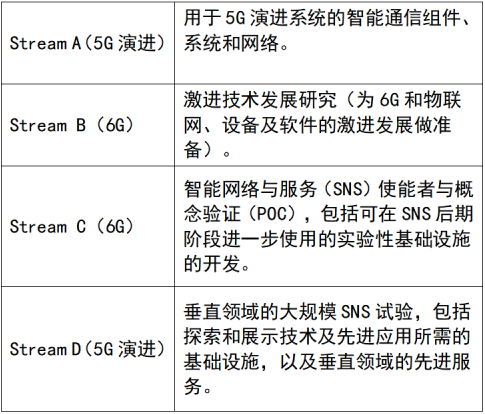Omdia analyzes EU's 6G vision: further technology and infrastructure investment plans are needed

The latest report from market research firm Omdia shows that on March 1, 2022, the European Commission (EC) laid out its 6G Vision, which aims to create a regulatory framework that encourages 6G-enabled infrastructure and technologies. This vision is supported by a number of research and innovation (R&I) projects, for which €2 billion in public and private funding has been allocated. In December 2021, the EU's Joint Commitment on 6G Smart Networks and Services (SNS JU) between industry and the European Commission adopted its first work plan for 2021-2022, allocating €240 million to support four main Supplemental workflow. Over the next few years, industries, governments and regulators will need to address some fundamental issues to make 6G a reality, including data security, privacy and trust, as well as spectrum resources and interference.
Regulators need to start preparing for 6G development and eventual deployment
The European Commission's 6G vision is to combine public and private resources with an investment-friendly regulatory framework to build the required level of infrastructure and technological capabilities. It also develops strategies and tools to enable the industry to develop 6G technology. Compared with 5G systems, 6G networks are expected to provide larger system capacity, higher data transfer rates, lower latency, stronger security and better quality of service (QoS).
The EU's vision outlines the development of new key applications such as real-time automation or extended reality ("Internet of perception") - sensing, collecting and providing data for a digital twin of the real physical world. These new applications and technologies will pave the way for leading tech companies; for example, in microchips targeting 6G or next-generation cloud technologies.
6G is expected to improve the energy efficiency of network connectivity infrastructure to cope with the massive increase in traffic and to be the foundation for people-centric services and the achievement of sustainable development goals.
To support the EU vision, 6G R&I programmes have been launched at European and Member State level; for example, 6G R&I and 5G deployment actions by European or national funding programmes. 2 billion euros of public and private funds have been announced. In addition, 100 million euros are planned to be dedicated to the 6G R&I program, partly funded by the Next Generation EU Recovery Program, which covers a wide range of fundamental technologies, testbeds, intellectual property, specialized digital skills and sustainable development solutions Program.
Back in December 2021, the EU's Joint Commitment on 6G Smart Networks and Services (SNS JU) between industry and the European Commission adopted its first 2021-2022 work plan with public funding of €240 million. The work programme will fund a range of activities, such as large-scale trials and pilots of 5G across verticals, and research into 6G systems. The plan also builds on the EU's allocation of 900 million euros over the next seven years, with the private sector contributing the same amount. The aim is to enable European companies and institutions to build R&I capabilities for 6G systems and develop markets for 5G infrastructure to support digital and green transitions. The workplan lists four main complementary workstreams, as shown in Table 1.

Table 1: SNS JU work plan flow. Source: Omdia, European Commission.
The work programme is expected to expand on the early wave of European 6G projects launched under the 5G public-private partnership. This workflow is expected to evolve into research, proof-of-concept, standardization and deployment in subsequent phases, and open up new opportunities for technology development in broader supply chains such as microelectronics or cloud-based service provisioning.
Sarah McBride, senior regulatory analyst at Omdia, said that 6G networks are expected to be implemented between 2027 and 2030, starting from 2037 as the dominant technology. After a typical 10-year generational refresh cycle for mobile technology, industry, governments and regulators now need to start preparing for the development and eventual deployment of 6G. Over the next few years, before 6G becomes a reality, industry, governments, and regulators need to address some fundamental issues, including data security, privacy, trust, and spectrum resources and interference.